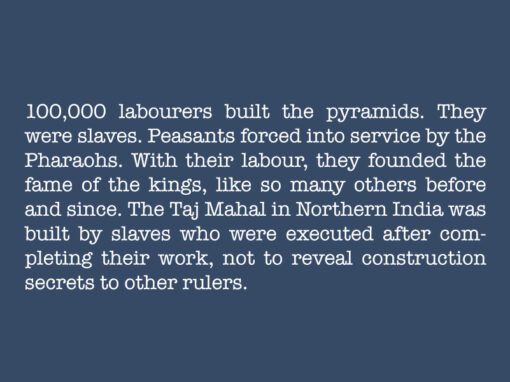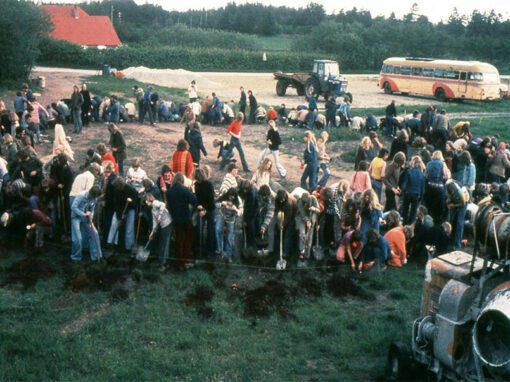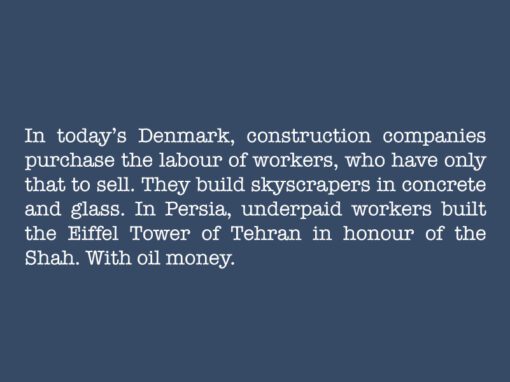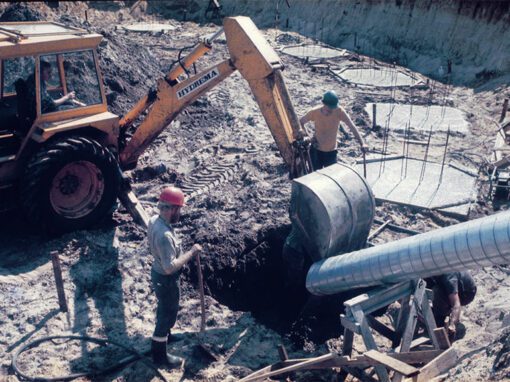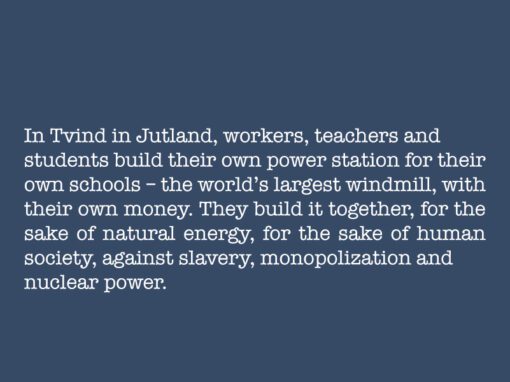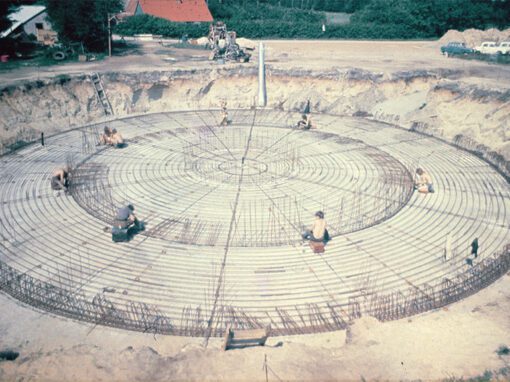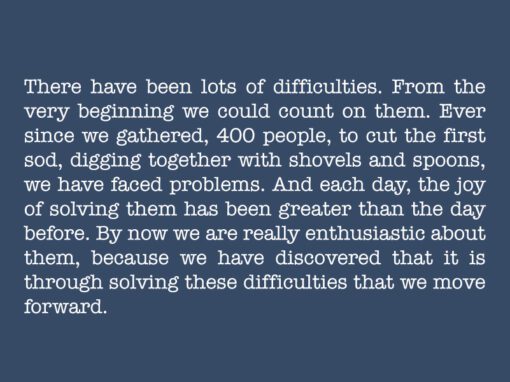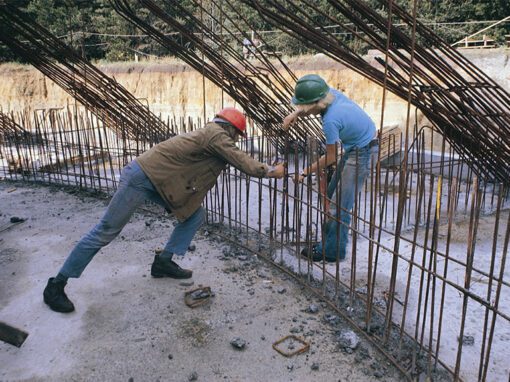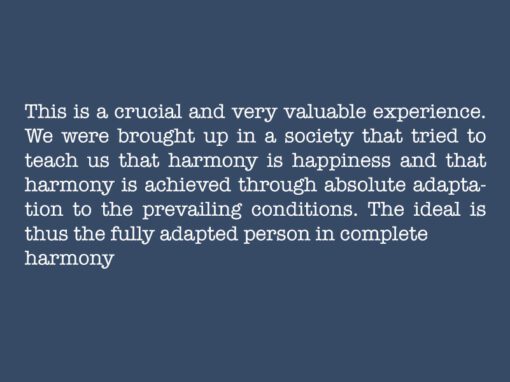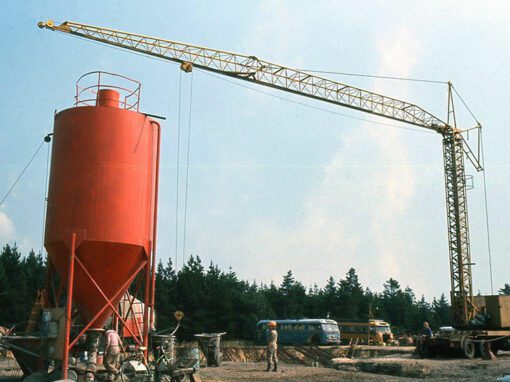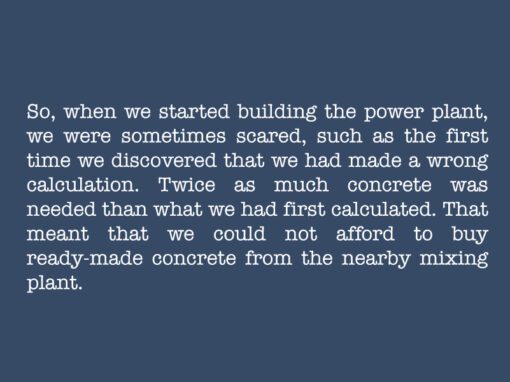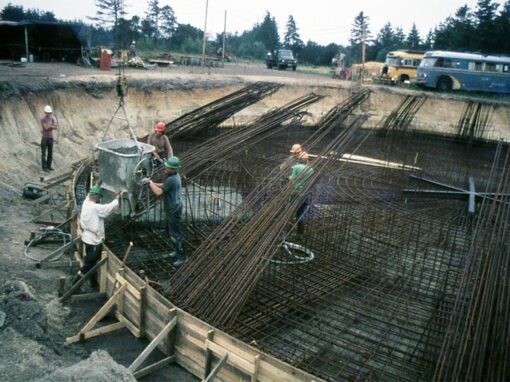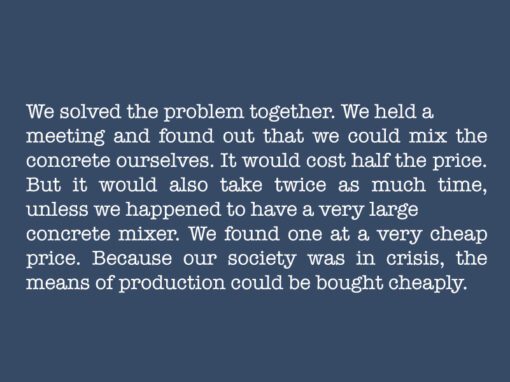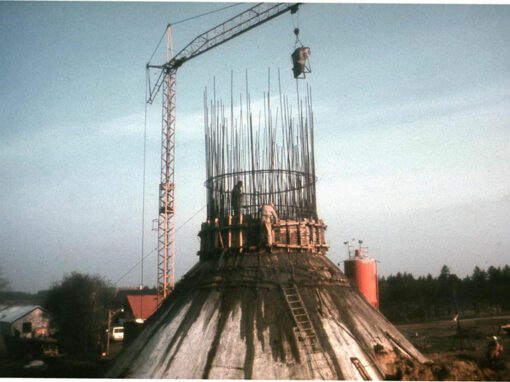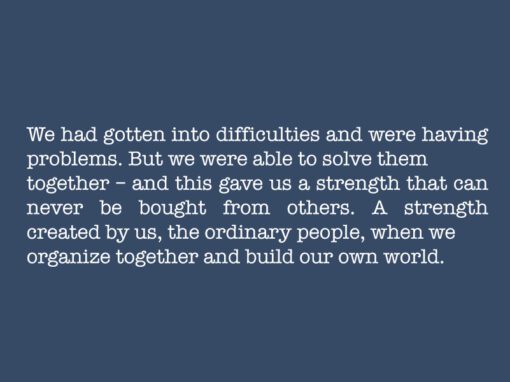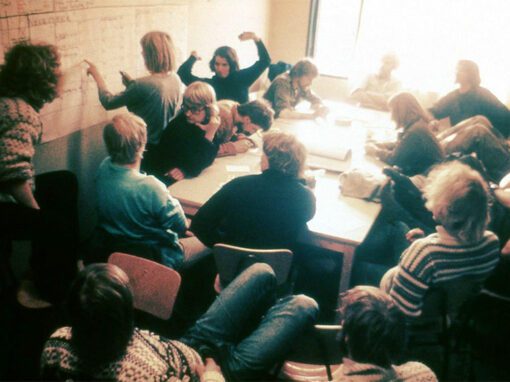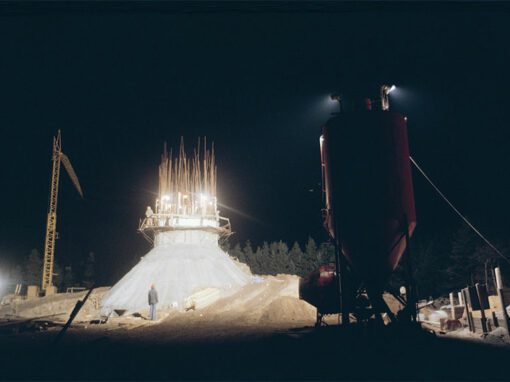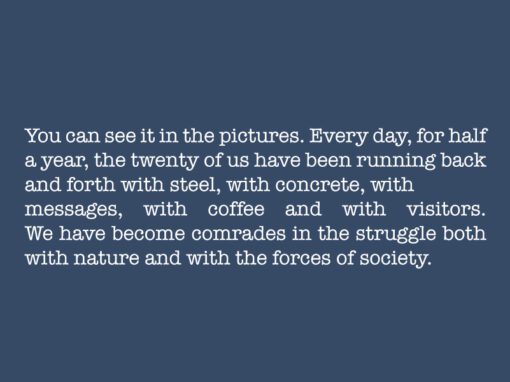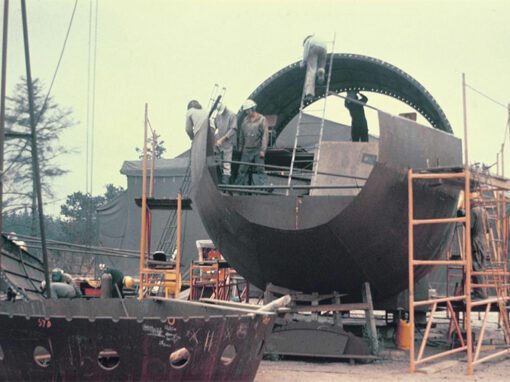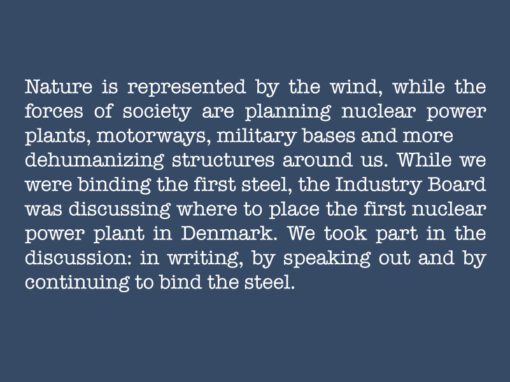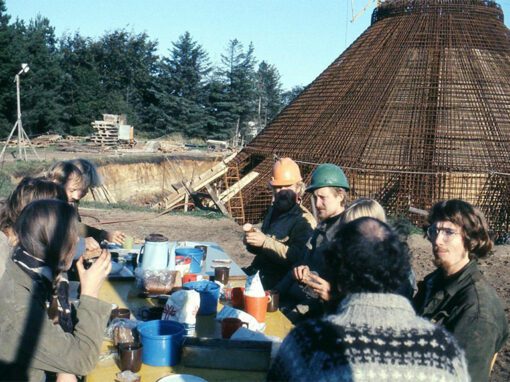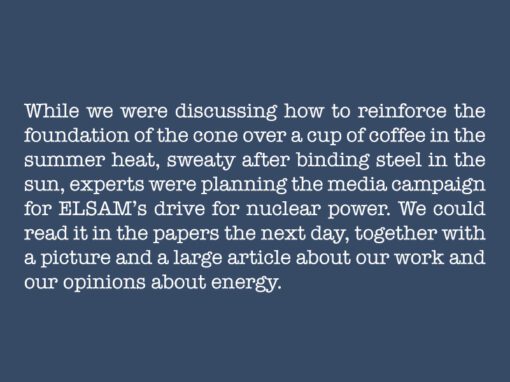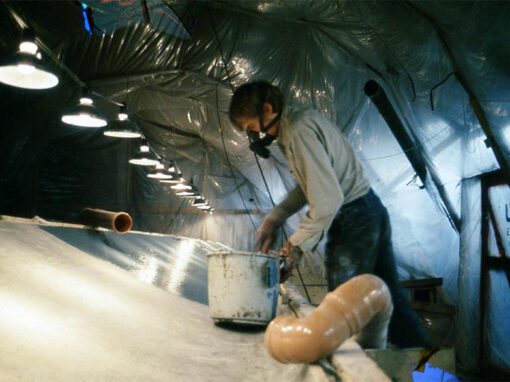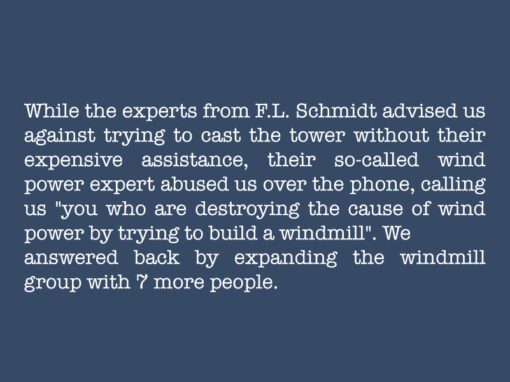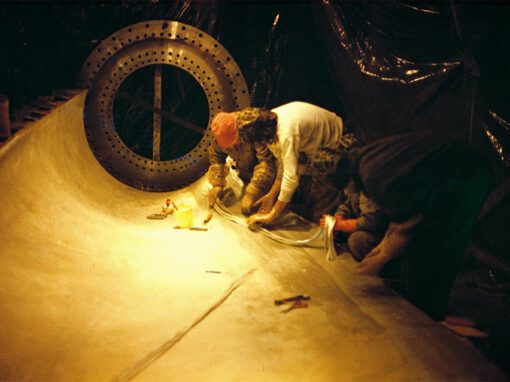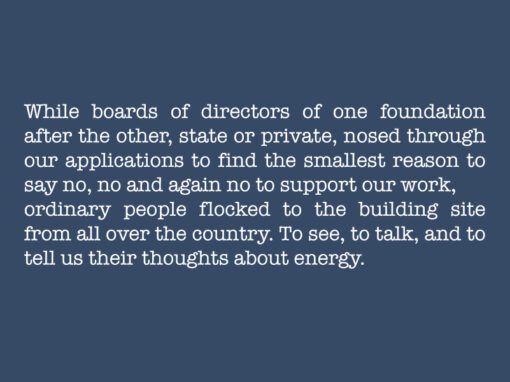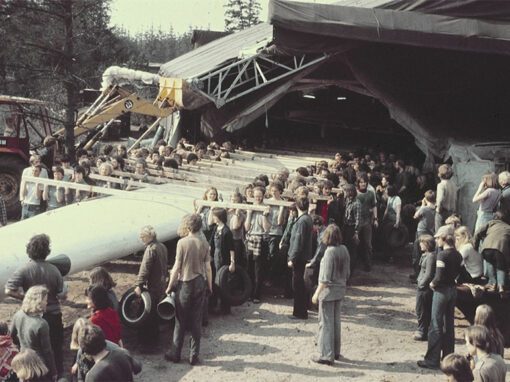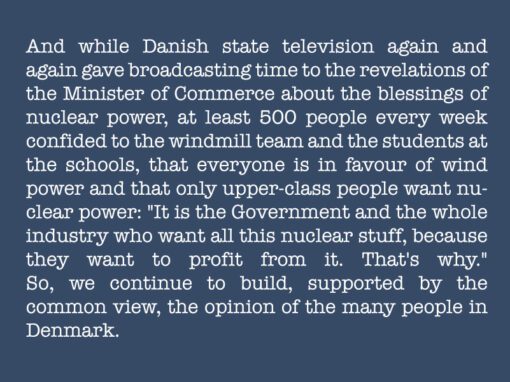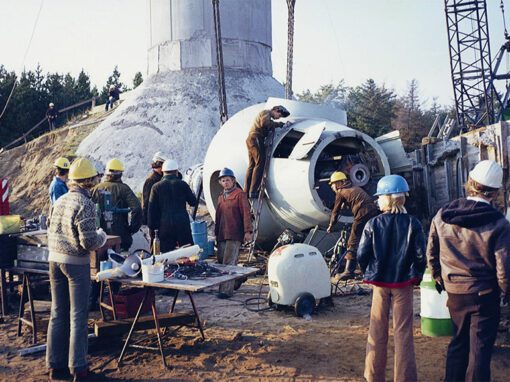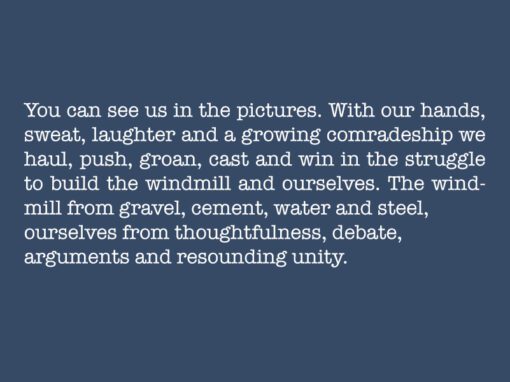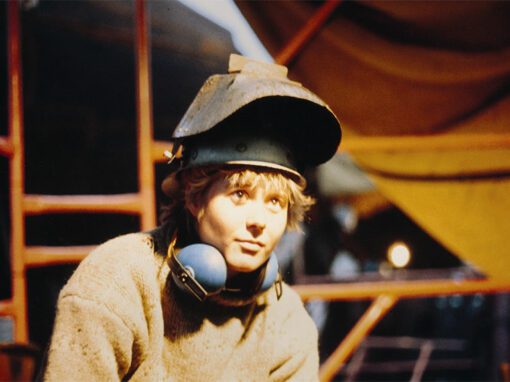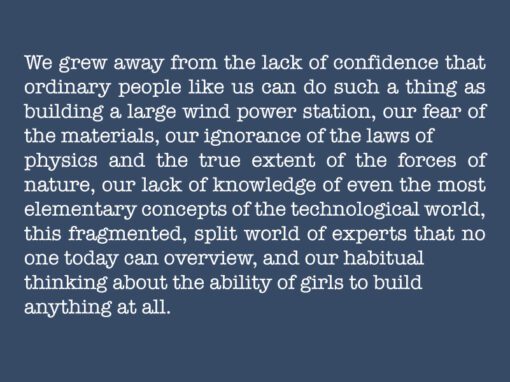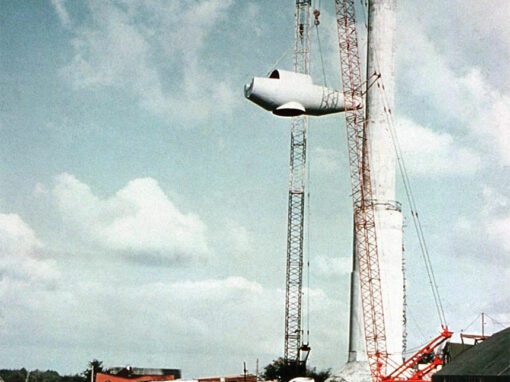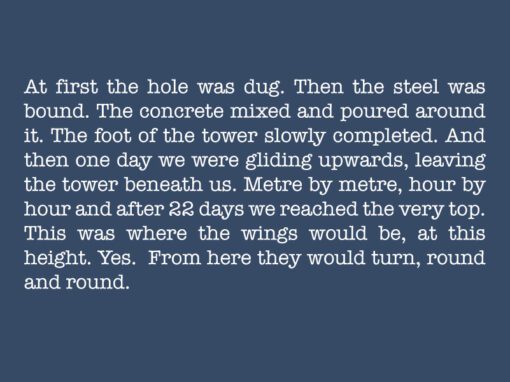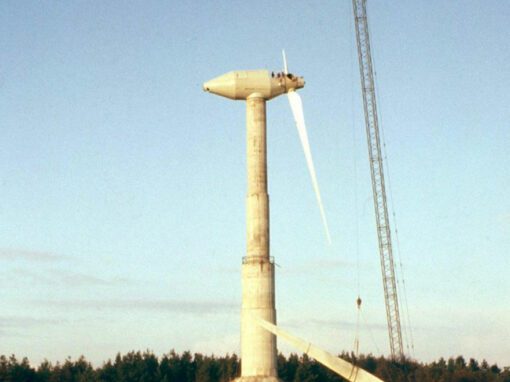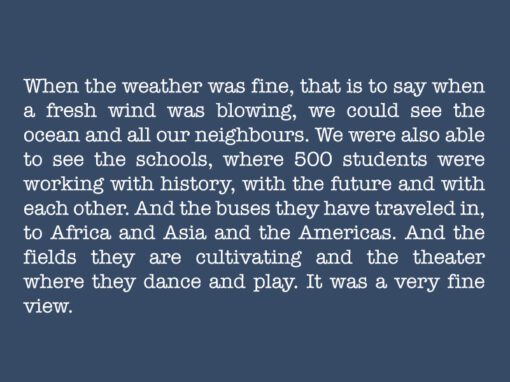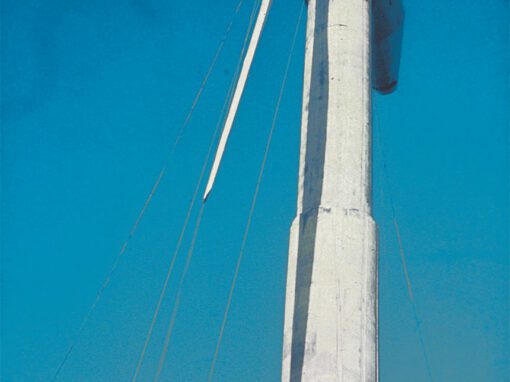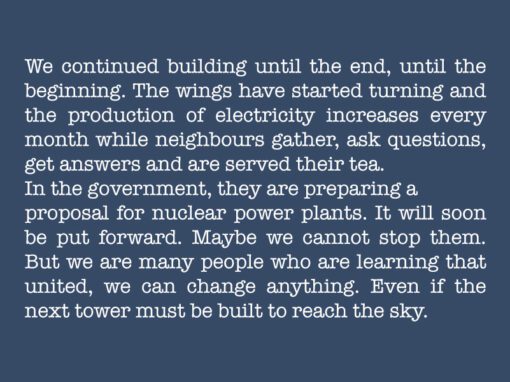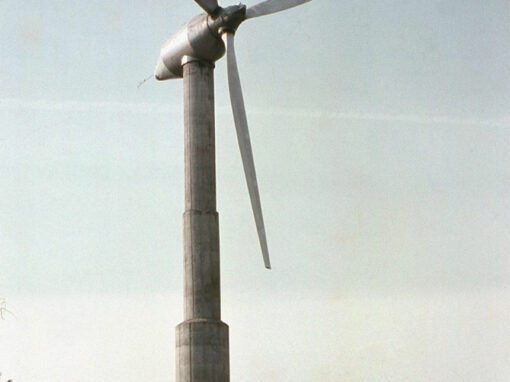How it began
The story of how a few determined young people decided to harness the wind, inspired a generation in the process and made an important impact on the history of wind power.
Tvindkraft was founded by teachers from the Travelling Folk High School, The Necessary Teacher Training College, and the newly established Tvind Continuation School for teenagers. These schools shared a large campus in the parish of Madum, just outside Ulfborg in Western Denmark, on the former Tvind farm. The Tvindkraft (Tvind Power) turbine was built for a variety of reasons.
For starters, it was a reaction to the energy monopolisation that caused the 1970s oil crisis. Energy prices skyrocketed, and the teachers realised that something had to be done about it.
Politicians and large energy companies seriously considered building nuclear power plants in Denmark, despite strong popular opposition. There were, however, few tangible alternatives to point to. It was necessary to demonstrate to people that they could take matters into their own hands and devise their own solutions. It seemed like a good idea to harness the wind, a plentiful resource in Western Jutland that no one owned. A decision that would have a positive impact on the history of wind power.
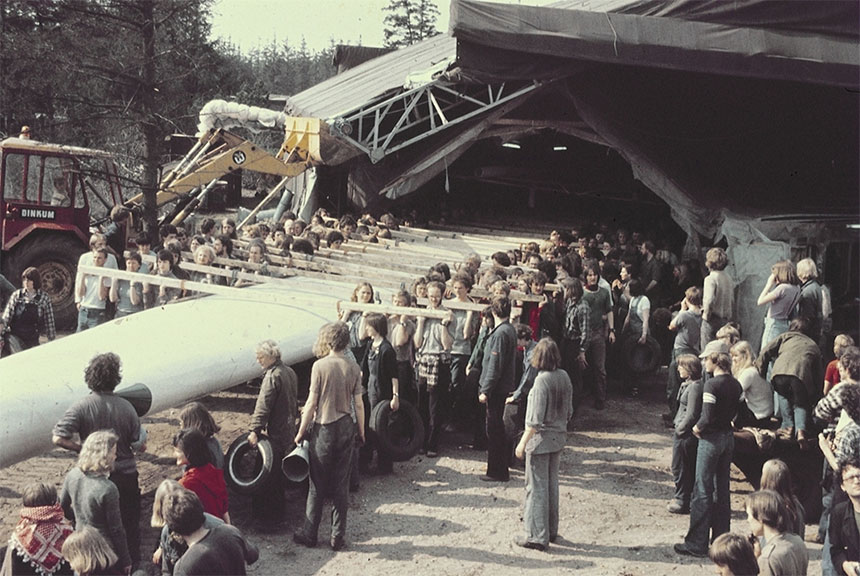
The windmill team
In 1975, many young people were looking for non-traditional education, communal living, and new ideas to explore. As a result, when the Tvind teachers’ group advertised in one of the major newspapers, “Windmill builders wanted,” there was a lot of interest. As a result, the Windmill Team was born. They were young, enthusiastic volunteers from various backgrounds. The average age was 21 years old.
Attempts to build modern versions of the ancient technology of windmills had previously been made, but they never progressed beyond the experimental stage. The Windmill Team set out to build a wind turbine that would stand tall against energy monopolisation and benefit ordinary people.
It’d never been done before. This was to be the world’s first megawatt (MW) wind turbine. The windmill builders had no prior experience, and no one else did either, because this was a pioneering endeavour. There were no experts to seek advice from.
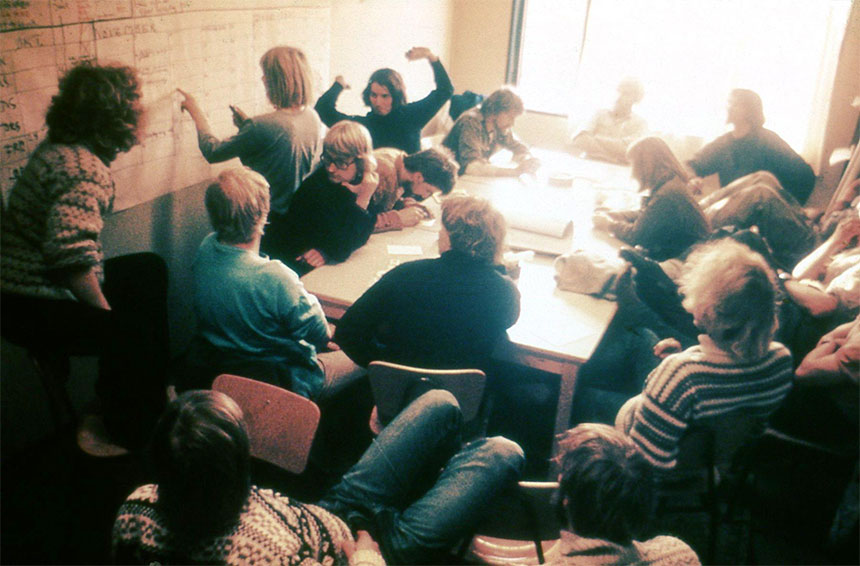
The power of the collective
The windmill team was collectively responsible for the project, both in terms of design and practical construction work. Engineers and other professionals were hired as needed to create drawings and calculations. Some of these professionals were up to the task; others were not, and the windmill team was forced to find alternative solutions. One thing they didn’t have to be concerned about was funding. The teachers paid for the project with their own money.
Although the windmill builders lacked experience, they were realistic and humble. They realised that they needed to make up for their lack of experience with thoroughness. They knew they had to look into every detail and get it right. They had to do everything themselves, and they had to learn what they didn’t know. This is the primary reason Tvindkraft is still in operation today, and why Tvindkraft has become a legend in the history of wind power.
Every decision was made unanimously. It was critical to maintain faith in what they were doing. They were up against powerful forces, including the force of the wind and opposition from the established industry. One company advised them to abandon the project because they would never succeed, thereby harming the wind energy industry.
The Windmill Team outperformed everyone in the industry by developing a wind turbine with a modern pitch system, innovative fibreglass blades, use of a frequence converter allowing for variable speed and computer controls. Tvindkraft stood tall after three years of construction and began to provide clean, autonomous electricity to the Tvind campus’s schools. And it has done so ever since.
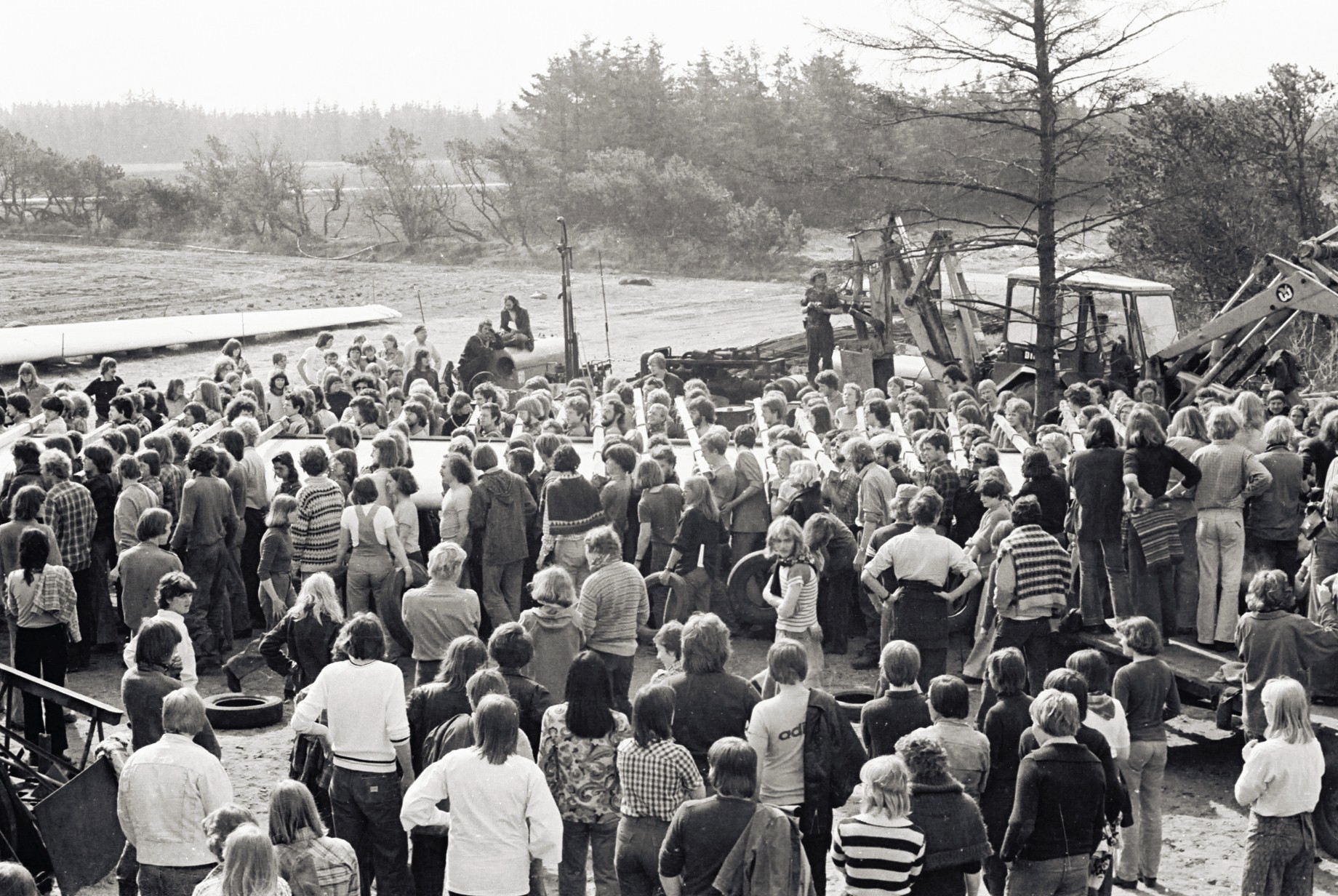
We all wanted to make the first dig together because it was our windmill. There weren’t enough spades, so some of us had to use soup spoons or anything else we could find. I was right there in the mix wearing my dirty shirt with a soup spoon in my hand to make my dig. It was an amazing experience that I would not trade for anything else.
Else Sørensen
The story of Tvindkraft
– a legend in the history of wind power
In the cone shaped foundation under the turbine you find “The Cone Exhibition”. It was created at the end of the construction work in 1978.
It is a poetic text explaining why the windmill was built, accompanied by large photos from the building site.

